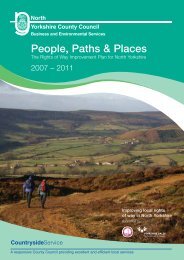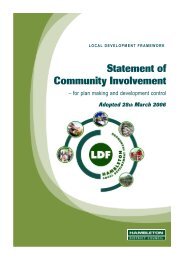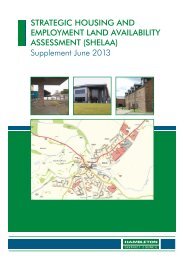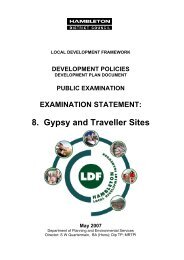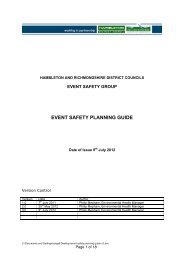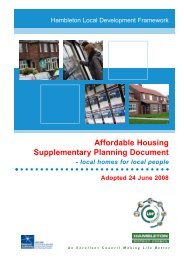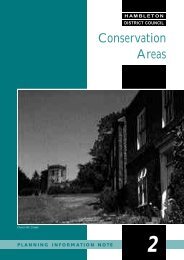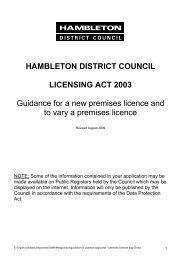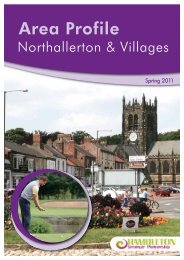Strategic Flood Risk Assessment - Hambleton District Council
Strategic Flood Risk Assessment - Hambleton District Council
Strategic Flood Risk Assessment - Hambleton District Council
You also want an ePaper? Increase the reach of your titles
YUMPU automatically turns print PDFs into web optimized ePapers that Google loves.
Residential uses should be limited to job-related accommodation (e.g.<br />
caretakers and operational staff). Caravan and camping sites should<br />
generally not be located in these areas. Where, exceptionally, development is<br />
permitted, it should be provided with the appropriate minimum standard of<br />
flood defence and should not impede flood flows or result in a net loss of<br />
flood-plain storage.<br />
3.32 c. Functional flood plains<br />
Notes:<br />
These areas may be suitable for some recreation, sport, amenity and<br />
conservation uses (provide adequate warning and evacuation procedures are<br />
in place). Built development should be wholly exceptional and limited to<br />
essential transport and utilities infrastructure that has to be there. Such<br />
infrastructure should be designed and constructed so as to remain<br />
operational even at times of flood, to result in no net loss of flood-plain<br />
storage, not to impede water flows and not to increase flood risk elsewhere.<br />
There should be a presumption against provision of camping and caravan<br />
sites.<br />
(a) All risks relate to the time at which a land allocation decision is made or an<br />
application submitted. The Environment Agency will publish maps of these<br />
<strong>Flood</strong> Zones. <strong>Flood</strong> Zones should be identified from Agency flood data<br />
ignoring the presence of flood defences. Local planning authorities should,<br />
with the Agency, identify those areas currently protected by defences and the<br />
standard of protection provided by those defences.<br />
(b) Development should not be permitted where existing sea or river defences,<br />
properly maintained would not provide an acceptable standard of safety over<br />
the lifetime of the development, as such land would be extremely vulnerable<br />
should a flood defence embankment or sea wall be breached, in particular<br />
because of the speed of flooding in such circumstances.<br />
3.33 Further considerations<br />
Within the sequential test there are exceptions and further considerations.<br />
3.34 1. Insurance considerations<br />
The insurance industry has become increasingly concerned about<br />
environmental risks, including flooding, and the scale of claims to which they<br />
give rise. So the industry is continuing to assess and review its position in<br />
respect of flood risk, particularly in response to the November 2000 flooding<br />
events. Companies are employing increasingly sophisticated techniques to<br />
identify the risk to specific properties, notably ‘Norwich Union’. It follows that<br />
developments subject to flood risk could face increasing difficulties with the<br />
cost and availability of insurance, which in turn could cause problems for<br />
property buyers in obtaining mortgages. Typically insurers are seeking flood<br />
protection against a 1 in 75 year return period flooding event, otherwise there<br />
maybe restrictions in policy coverage or the availability of insurance.<br />
3.35 2. Previously developed land<br />
11



